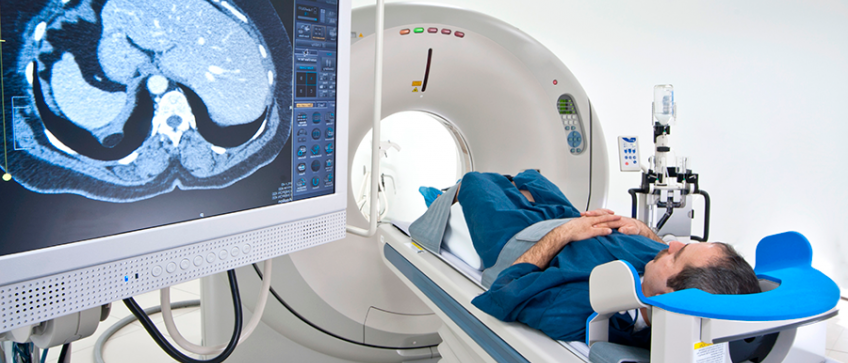Could an early PET scan help better manage Hodgkin Lymphoma?
17 Mar 2017
Adapting treatment based on results of early Positron-Emission Tomography (PET) scan in Stage I/II Hodgkin Lymphoma patients could improve outcomes, demonstrated a unique EORTC/LYSA/FIL H10 study published in the Journal of Clinical Oncology.
Patients treated with 2 cycles of doxorubicin, bleomycin, vinblastine and dacarbazine (ABVD) were evaluated with an early PET scan. While those randomized in the standard arm received additional ABVD chemotherapy followed by radiotherapy, irrespective of the PET result, those randomized in the experimental arm were treated according to the PET result : patients with negative PET result received additional ABVD chemotherapy but no radiotherapy, while PET positive patients received 2 cycles of escalated doses of bleomycin, etoposide, doxorubicin, cyclophosphamide, vincristine, procarbazine, prednisone (BEACOPPesc) followed by radiotherapy.
Out of the 1950 randomized patients, 1925 had an early PET scan, 18.8% of which were positive. Amongst these patients, 5-year Progression-Free Survival improved from 77.4% for those receiving standard of care to 90.6% for those treated with the intensified combined treatment regimen.
In patients with a negative PET, those with favorable prognosis and receiving combined therapy had a 99.0% 5-year Progression-Free Survival, compared to 87.1% in those with chemotherapy alone; those with unfavorable prognosis receiving combined therapy had a 92.1% 5-year Progression-Free Survival, compared to 89.6% in those with chemotherapy only. The study could not demonstrate the non-inferiority of chemotherapy alone as compared to combined therapy.
“The medical community has made great progress in treating early-stage Hodgkin Lymphoma,” said John Raemaekers, Principal Investigator for the study. “Being able to detect early what patients are most likely to benefit from a modified treatment strategy will help us address the needs of those sub-groups of patients and improve their overall risk/benefits ratios. The H10 study shows that early PET-positive patients , after two cycles of ABVD, significantly benefit in terms of progression-free survival from intensification with 2 cycles of BEACOPPesc+INRT, which should now be considered as the best treatment option. In early PET-negative patients, the overall outcome is excellent, either after combined therapy or after chemotherapy alone, albeit at the cost of more relapses after chemotherapy alone.”
The study was performed in collaboration with LYSA, the Lymphoma Study Association,
and FIL, the Fondazione Italiana Linfomi.
Related News
2148 MRD Study reaches milestone with First Patient In (FPI)
4 Aug 2025
PET imaging widely used in European brain tumour centres, survey shows
1 Jul 2025
New EORTC Leadership: President-Elect and Scientific Chairs Council
27 Jun 2025
First Site Activated in EU-Funded DE-ESCALATE Clinical Trial on Advanced Metastatic Prostate Cancer
10 Jun 2025
EORTC publishes its 2024 Annual Report: Driving progress in cancer treatment, together
4 Jun 2025
EORTC in the spotlight at ASCO 2025
4 Jun 2025
EORTC’s presence at ASCO 2025
28 May 2025
Celebrating Clinical Trials Day 2025 with EORTC’s Young and Early Career Investigators
20 May 2025
New commentary urges a rethink of quality of life metrics in cancer care economics in the context of EU HTA reform
19 May 2025
EORTC Quality of Life Conference 2025 wraps with strong call for patient-centred innovation in oncology
14 May 2025


